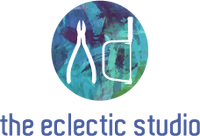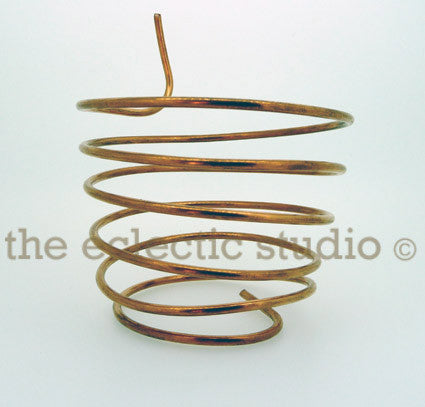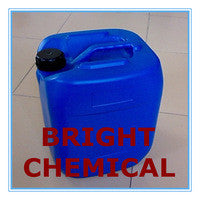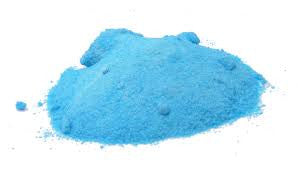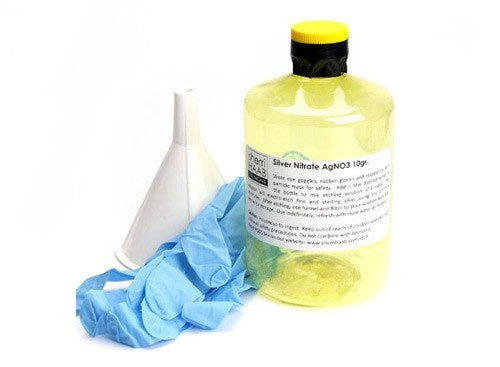
Just add distilled water to the powder to mix your own silver etching solution to etch fine silver. The re-usable mixing/storage bottle provides minimal contact with the loose silver powder. After etching, simply pour the solution back into the storage bottle using a coffee filter and funnel. Keep the solution for future use, as it will not become exhausted. For use with the E3 Etch Controller. NOTE: The exposed metal of the aluminium or copper wire that is attached to your piece must coated or covered with tape to avoid contaminating the solution.
Keep away from children and pets and follow all safety precautions.
Kit contains: 10 grams silver nitrate powder, storage mixing bottle, funnel, filter, rubber gloves and instructions.
The image above is indicative only as we have to source this product locally.
Some technical help for you:
Using Silver Nitrate with electrical etching is the best electrolyte for fine silver. Silver nitrate is mixed in distilled water as a 2% solution, which is similar in concentration to burn creams, or the antibiotic solution previously used in baby’s eyes at birth. Silver nitrate is a chemical compound available in powder form or in a pre-mixed solution. You will only need a small amount to etch with. After each use it can be filtered and re-used for future etching projects. Silver nitrate is light and air sensitive; so keep the mixed solution in a closed container in a dark cupboard. Use a dedicated stainless steel pan for silver nitrate. A few words of caution: Airborne silver nitrate dust is harmful to breathe and grains can stain skin. A dust mask and rubber gloves should be worn while measuring dry powder. Mark the solution well as it is poisonous to ingest. Follow all of the safety guidelines, make sure to keep out of reach from children and pets. Visit the “SDS” link under “Learn” at www.sherrihaab.com for safety information. Silver nitrate can be used over and over for fine silver. With sterling silver, the solution eventually converts into a weak copper nitrate solution over time as the copper is extracted from the sterling. If the sterling is made with copper, the solution holds up fairly well with repeated etchings. However, sterling made with other metals can contaminate the solution and it will cease to etch. If you want to keep using the same batch, stick to fine silver. Silver nitrate does an excellent job of etching on silver metal clay as well. Strain the solution through a coffee filter after each use and reclaim the silver residue to use for other purposes. As sterling etches you will see a small amount of dark residue form during the etching process. This is the copper extracted from the sterling. These small amounts of copper dissolve into the solution and over time you may notice the solution turning blue in colour. After each etching session, filter the solution through a coffee filter and store in a marked bottle for storage. The solution can be used again, but in the event you need to dispose of it, you can flush it away by diluting with lots of water. Do not flush into septic systems however, as silver nitrate is an anti-microbial. Mixing the silver nitrate solution (for fine silver or sterling with copper alloy) To mix your own solution, add ½ litre of distilled water to 10 grams silver nitrate. Our silver nitrate kit comes with a bottle that is made with a plastic that will not react with silver nitrate, so it’s easy to mix without having to touch the powder. You may also use glass. Remember to wear gloves and follow safety precautions. The etching will take 30 minutes to 2 hours or more depending on how deep you want the finished relief pattern to be.
